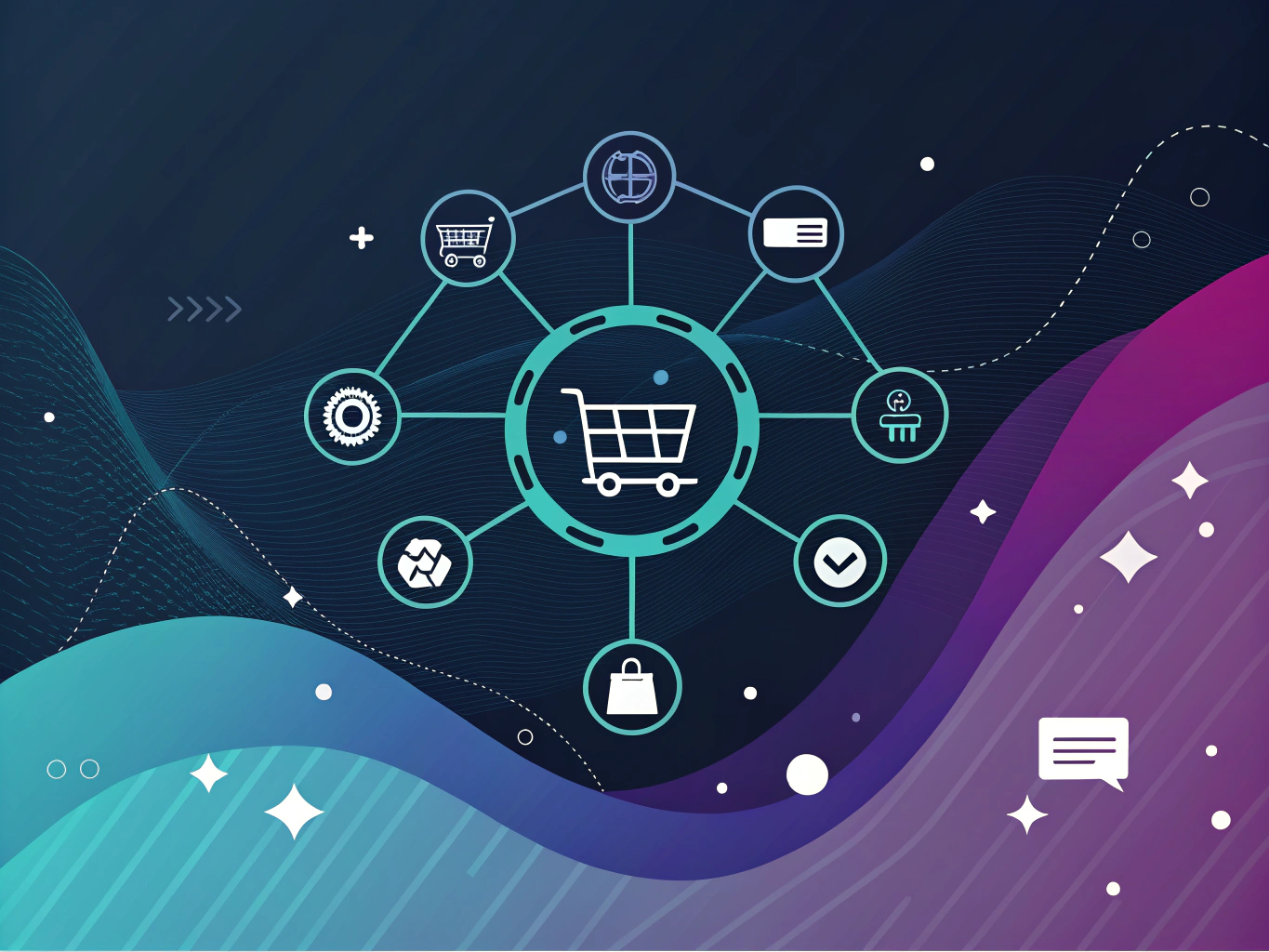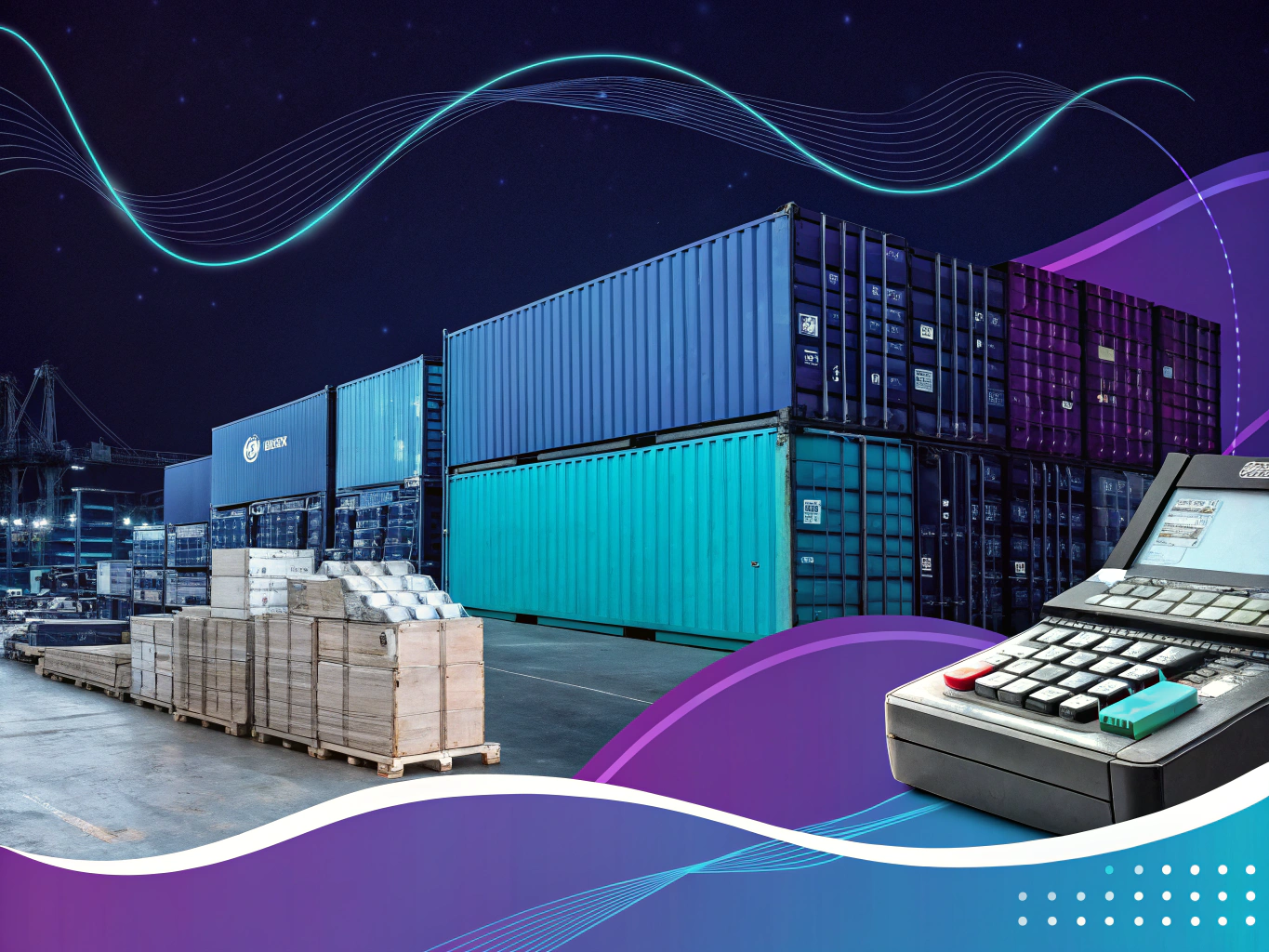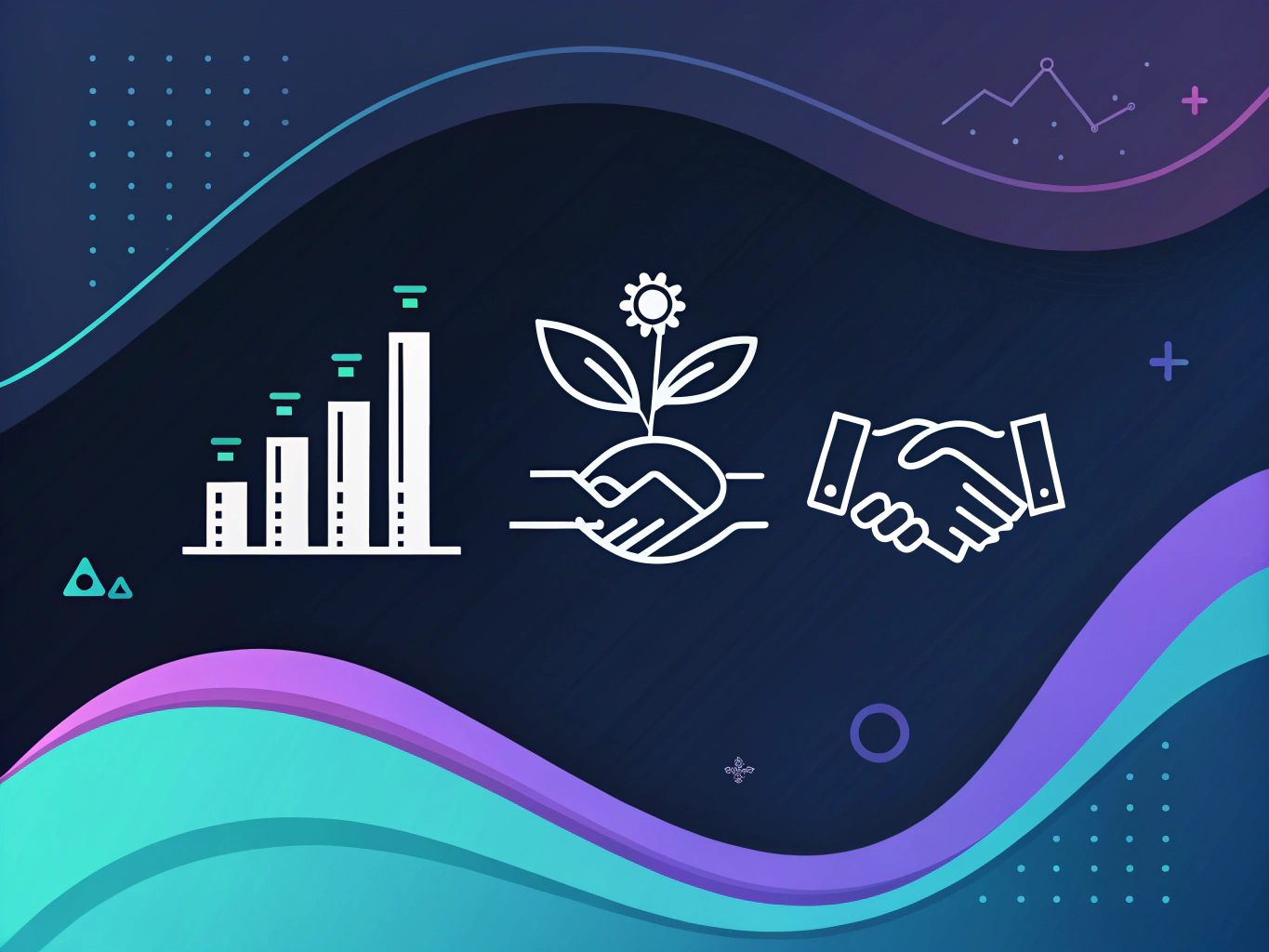Let’s be honest – most guides about selling wholesale read like instruction manuals written by accountants who’ve never actually sold anything. They’ll tell you it’s all about buying low and selling lower, throw some jargon at you about B2B relationships, and call it a day.

But here’s the thing: wholesale isn’t just about moving products in bulk anymore. It’s about creating scalable business models that can thrive in an era where Amazon changes the rules weekly, where TikTok can make or break your inventory planning, and where AI is revolutionizing everything from product sourcing to customer relationship management.
I’ve spent the last decade watching ecommerce evolve from simple dropshipping operations to sophisticated multi-channel empires. And if there’s one thing I’ve learned about how to sell wholesale successfully, it’s that the old playbook needs a serious update.
Understanding the Modern Wholesale Landscape

Remember when wholesale was just about being the middleman between manufacturers and retailers? Those days are gone. Today’s wholesale landscape is as complex as a game of 4D chess, with players moving across multiple dimensions of commerce simultaneously.
What Actually Makes a Wholesale Business in 2025?
Think of wholesale like the backbone of commerce – it’s the infrastructure that keeps products flowing from makers to sellers to buyers. But unlike traditional wholesale distribution that operated like a one-way street, modern wholesale is more like a complex highway system with multiple entry and exit points.
You’ve got your classic B2B wholesale model, where you’re selling bulk quantities to other businesses. Then there’s the hybrid approach, where you might be doing both wholesale and direct-to-consumer sales (yeah, that’s allowed now). And increasingly, we’re seeing wholesale businesses that operate entirely online, never touching physical inventory thanks to sophisticated fulfillment networks.
The Real Benefits of Starting a Wholesale Business
Look, I’m not going to sugar-coat it – wholesale isn’t some get-rich-quick scheme. But it does offer some pretty compelling advantages that make it worth considering:
- Higher order values (we’re talking thousands instead of hundreds)
- More predictable revenue (because business customers tend to order regularly)
- Lower customer acquisition costs (since you’re dealing with fewer, larger customers)
- Simplified operations (compared to dealing with thousands of individual retail customers)
- Global market potential (especially with modern ecommerce platforms)
The Current State of Wholesale Markets
Let’s talk numbers for a second. The global B2B ecommerce market is expected to hit $20.9 trillion by 2027. That’s not a typo – we’re talking trillion with a T. But here’s what’s really interesting: this growth isn’t just coming from traditional wholesale channels.
Where the Real Opportunities Are
The most exciting opportunities in wholesale right now aren’t where most people are looking. Everyone’s fighting over the same saturated markets while ignoring some pretty incredible niches, like seasonal wholesale opportunities for trending Halloween costumes, which can drive massive bulk sales during the fall season.
- Sustainable and eco-friendly product wholesale
- Tech-enabled customization at scale
- Cross-border wholesale enabled by AI
- Specialized marketplaces for emerging industries
Getting Your Wholesale Operation Off the Ground

The Foundation: Legal and Administrative Setup
Before you start dreaming about those big wholesale orders, you need to get your house in order. This means:
- Registering your business (LLC or Corporation usually makes sense for wholesale)
- Getting your wholesale license and permits
- Setting up proper accounting systems
- Understanding your tax obligations (they’re different for wholesale)
- Getting appropriate insurance coverage
Choosing Your Products: The Smart Way
Here’s where most wholesale guides get it wrong – they’ll tell you to just find products with good margins. But that’s like choosing a spouse based solely on their income. You need to think bigger:
- Market demand and trends
- Competition analysis
- Supply chain reliability
- Storage and shipping requirements
- Product lifecycle and seasonality
The Financial Framework
Setting Up Your Numbers for Success
Let’s talk money – not just profits, but the whole financial ecosystem of your wholesale business. This includes:
Initial Investment Requirements:
- Inventory costs (your biggest expense)
- Technology and software
- Legal and administrative fees
- Marketing and sales tools
- Operating capital buffer
Pricing Strategy That Makes Sense
Pricing in wholesale isn’t just about marking up your cost by a certain percentage. You need a sophisticated approach that considers:
- Cost of goods sold (COGS)
- Operating expenses
- Market positioning
- Volume discounts
- Customer segment pricing
Building Your Online Presence

Creating a Professional B2B E-commerce Platform
Your online presence needs to be more than just a digital catalog. Modern wholesale buyers expect:
- Easy account creation and management
- Real-time inventory visibility
- Customized pricing tiers
- Bulk order capabilities
- Integration with their systems
Platform Selection: Making the Right Choice
Your platform choice can make or break your wholesale operation. Popular options include how to start a wholesale business with Shopify Plus, WooCommerce, and BigCommerce, each offering unique B2B features tailored to different needs.
- Shopify Plus (great for hybrid retail/wholesale)
- WooCommerce (highly customizable)
- BigCommerce (solid B2B features)
- Custom solutions (for unique requirements)
Inventory and Fulfillment Fundamentals
Setting Up Your Warehouse Operations
Whether you’re running your own warehouse or using a 3PL, you need to nail these basics:
- Inventory tracking systems
- Order processing workflows
- Quality control procedures
- Returns handling
- Shipping optimization
Technology Stack for Modern Wholesale
Your tech stack needs to support both current operations and future growth:
- Inventory management software
- CRM systems
- Order management tools
- Analytics platforms
- Integration middleware
The wholesale landscape is evolving faster than ever, driven by technological advances and changing buyer expectations. Success in this space requires more than just having products to sell – it demands a strategic approach that combines traditional wholesale principles with modern digital capabilities.
Setting Up Your Wholesale Operation

Let’s get real for a minute – setting up a wholesale operation isn’t exactly like building a LEGO Death Star (though sometimes I wish it were that straightforward). It’s more like orchestrating a complex dance between your digital presence, inventory management, and the actual nuts and bolts of moving products. And just like any good dance, it’s all about finding your rhythm.
Creating Your Online Presence
Remember when having a website was optional? Yeah, me neither. Today, your online presence is basically your digital storefront, and in wholesale, it needs to work harder than that barista making triple shot espressos during morning rush hour.
First things first – you need a robust e-commerce platform. Shopify Plus and WooCommerce are like the Marvel and DC of wholesale platforms (pick your superhero). They both offer solid B2B features, but here’s what you really need to consider:
- Password-protected wholesale portals (because not everyone gets backstage access)
- Tiered pricing capabilities (different strokes for different folks)
- Bulk order management (because no one wants to click “add to cart” 500 times)
- Custom payment terms (Net 30? Net 60? Let’s talk)
Inventory and Fulfillment: The Behind-the-Scenes Hero
If your online presence is the face of your operation, inventory management is its beating heart. And trust me, you don’t want that heart to skip a beat. I’ve seen too many wholesale businesses crash and burn because they couldn’t keep their inventory straight.
Here’s what you need to nail down:
- Warehouse setup (whether it’s your garage or a 50,000 sq ft facility)
- Order processing systems that don’t make you want to throw your computer out the window
- Shipping partnerships that won’t eat all your profits
- Returns handling (because sometimes it’s not you, it’s them)
Marketing Your Wholesale Business
Marketing wholesale is different from B2C – it’s less “look at this shiny thing” and more “let’s talk business.” Think of it as dating vs. marriage – you’re looking for long-term commitment here.
Digital Marketing Strategies That Actually Work
Content marketing in wholesale isn’t about cute Instagram reels (though they can help). It’s about establishing authority and showing you know your stuff. Here’s what’s working in 2024:
- Detailed product catalogs that make your Amazon wholesale suppliers look amateur
- Educational content that helps retailers sell your products better
- Email campaigns that don’t sound like they were written by a robot
- LinkedIn presence (because that’s where the serious buyers hang out)
Traditional Marketing (Yes, It Still Works)
Call me old school, but some traditional marketing methods are like that vintage Star Wars poster – they never go out of style. Trade shows, industry networking, and good old-fashioned relationship building are still golden when it comes to wholesale distribution.
I recently attended a trade show in Chicago where a small business owner landed a six-figure deal just by having a conversation at the coffee station. You can’t get that kind of opportunity sliding into someone’s DMs.
Growing Your Wholesale Business

Growth in wholesale isn’t just about selling more stuff – it’s about scaling smartly. Think of it like upgrading your smartphone: you want all the new features, but you need them to work with your existing apps.
Scaling Operations Without Losing Your Mind
When it comes to scaling wholesale items to sell, automation is your best friend. But here’s the catch – you need to automate the right things. I’ve seen businesses try to automate everything and end up with a mess that makes the Star Wars prequels look well-organized.
Focus on:
- Order processing automation (because manual entry is so 2010)
- Inventory syncing across all channels (no more “sorry, we’re actually out of stock”)
- Customer service systems that maintain the human touch
- Shipping and logistics optimization (because margins matter)
Advanced Strategies for the Ambitious
Want to know how to become a wholesaler who stands out? Think beyond the basics. Consider private labeling, custom packaging, or even developing your own product lines. These strategies can help you break free from the “me too” wholesale crowd.
For those looking to sell wholesale on Amazon, the game has changed. It’s not enough to just list products anymore – you need a strategy that includes using tools like JumpSend to automate email follow-ups and improve customer engagement.
- Brand registry protection
- Amazon FBA wholesale integration
- Optimization for Amazon’s algorithm
- Strategic pricing that maintains profitability
Innovation and Adaptation
The wholesale landscape is changing faster than AI models get updated (and trust me, that’s fast). Success isn’t just about what you sell – it’s about how you adapt to change.
Emerging Technologies You Can’t Ignore
AI and automation aren’t just buzzwords – they’re transforming how wholesale vendors for small business operate. From predictive inventory management to AI-powered customer service, the future is already here. But here’s the key: don’t adopt technology just because it’s shiny. Adopt it because it solves real problems.
For example, we’re seeing wholesale business ideas emerge that combine traditional distribution with AI-powered demand forecasting. This isn’t just cool tech – it’s helping businesses reduce waste and increase profits.
Sustainability: The New Competitive Edge
If you’re wondering what does a wholesaling company do in 2025, add sustainability to your list. It’s not just about green packaging anymore – it’s about the entire supply chain. Retailers and consumers are demanding transparency and environmental responsibility.
Consider:
- Eco-friendly packaging options
- Carbon-neutral shipping programs
- Sustainable sourcing practices
- Waste reduction initiatives
The Future of Wholesale: Trends and Opportunities
If you’re wondering how to become a wholesaler in 2024 and beyond, you’re asking the right question at the right time. The landscape is shifting faster than a New York minute, and the opportunities are massive – if you know where to look.
Digital Transformation in Wholesale
AI isn’t just coming to wholesale – it’s already here, transforming everything from inventory management to customer service. But here’s the thing: AI in wholesale is like having an incredibly efficient intern who never sleeps. It’s not replacing the human element; it’s augmenting it.
For those looking into how to buy wholesale and sell on Amazon, the integration of AI tools has become a game-changer. Many sellers also benefit from enrolling in the best Amazon FBA course to gain insights into optimizing product listings and mastering fulfillment strategies. Amazon FBA wholesale distributors are using predictive analytics to forecast demand, optimize pricing, and identify new market opportunities with unprecedented accuracy.
Sustainability and Social Responsibility
The future of wholesale isn’t just about profits – it’s about purpose. Sustainable practices aren’t just good PR anymore; they’re good business. We’re seeing Amazon FBA wholesale suppliers completely reimagining their packaging and shipping methods to reduce environmental impact while actually improving their bottom line.
Final Thoughts: Your Wholesale Journey
Starting and growing a wholesale business isn’t for the faint of heart. It requires vision, persistence, and the ability to adapt faster than a chameleon in a disco. But for those wondering how to start a wholesale business, there’s never been a better time.
The key is to remember that wholesale business ideas are just the beginning. Success comes from execution, adaptation, and the willingness to embrace change. Whether you’re exploring how to sell wholesale as a small business or aiming to become the next major amazon distributor, the principles remain the same: start small, think big, and never stop innovating.
Action Steps to Get Started
- Research your market thoroughly and identify your niche
- Develop relationships with reliable wholesale suppliers and manufacturers
- Create a solid business plan with clear financial projections
- Invest in the right technology and systems from the start
- Build a strong online presence and marketing strategy
Look, I’ve seen countless businesses transform through wholesale. Some started with just a handful of wholesale items to sell from home and grew into major operations. Others found their sweet spot in specialized niches. The common thread? They all started somewhere, and they all kept moving forward.
The wholesale landscape is evolving rapidly, but the fundamentals of good business remain constant. Focus on building strong relationships, maintaining quality, and providing value. The rest – the technology, the systems, the scale – will follow.
And remember, in wholesale as in life, the goal isn’t to be perfect from day one. It’s to get better every day, learn from your mistakes, and keep pushing forward. Whether you’re just starting to explore how to sell wholesale on Amazon or you’re ready to scale your existing operation, the opportunity is there. The question is: are you ready to seize it?
Your wholesale journey starts now. Make it count.
👉👉 Create Photos, Videos & Optimized Content in minutes 👈👈
Related Articles:
- Choosing the Best Wholesale Ecommerce Platform – ProductScope AI
- CreatorKit AI vs ProductScope AI: AI Tools for Product Photo
- Amazon Reselling in 2025: Beginner’s Success Blueprint
Frequently Asked Questions
How to sell wholesale on Amazon?
Selling wholesale on Amazon involves registering as an Amazon Business Seller and listing your products in bulk quantities. Focus on optimizing your listings with detailed product descriptions and competitive pricing to attract business buyers. Utilize Amazon’s fulfillment services to efficiently manage shipping and customer service, ensuring a seamless buying experience for your wholesale customers.
How to sell wholesale as a small business?
As a small business, selling wholesale requires leveraging your unique strengths, such as personalized customer service or niche products. Begin by networking with local retailers and attending trade shows to showcase your offerings. Establish clear pricing strategies and order minimums to ensure profitability, and consider partnering with other small businesses to expand your reach.
How to buy wholesale and sell on Amazon?
To buy wholesale and sell on Amazon, start by identifying reputable wholesalers who offer products that align with your target market. Purchase inventory in bulk to benefit from lower prices, and then create compelling Amazon listings with competitive pricing strategies. Focus on building a strong seller reputation through excellent customer service and prompt fulfillment of orders.
How to sell wholesale products?
Selling wholesale products involves understanding your market and offering products that meet the needs of retailers or bulk buyers. Establish a compelling brand identity and use marketing tactics such as direct outreach, online platforms, and trade shows to gain visibility. Ensure efficient logistics and provide excellent customer service to build long-term relationships with your wholesale clients.
About the Author
Vijay Jacob is the founder and chief contributing writer for ProductScope AI focused on storytelling in AI and tech. You can follow him on X and LinkedIn, and ProductScope AI on X and on LinkedIn.
We’re also building a powerful AI Studio for Brands & Creators to sell smarter and faster with AI. With PS Studio you can generate AI Images, AI Videos, Chat and Automate repeat writing with AI Agents that can produce content in your voice and tone all in one place. If you sell on Amazon you can even optimize your Amazon Product Listings or get unique customer insights with PS Optimize.
🎁 Limited time Bonus: I put together an exclusive welcome gift called the “Formula,” which includes all of my free checklists (from SEO to Image Design to content creation at scale), including the top AI agents, and ways to scale your brand & content strategy today. Sign up free to get 200 PS Studio credits on us, and as a bonus, you will receive the “formula” via email as a thank you for your time.
